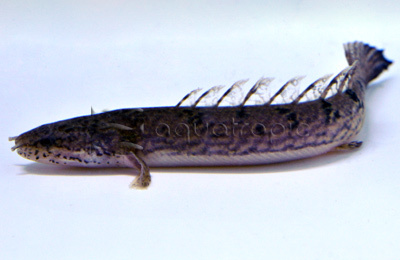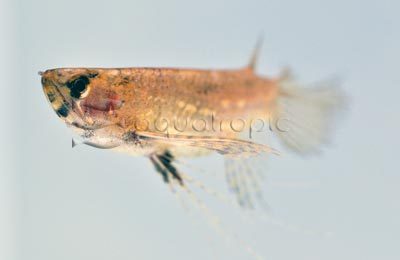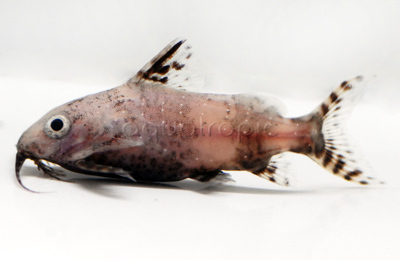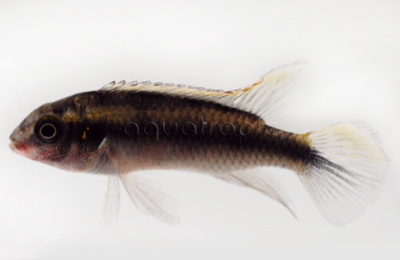The Fishes Of Africa (That Aren’t Rift Lake Cichlids) - Part One

Quick, what is the first freshwater fish you think of when you think of Africa? If you’re an ecologist, it might be the Nile Perch, which has been slowly decimating the native ichthyofauna wherever it has been introduced. If you’re involved in aquaculture, you might instead think of the tasty tilapia that speciated there. And if you’re an aquarist, odds are that the first fish that’ll pop into your head are the mbuna cichlids from the great rift lakes. These have become the quintessential African freshwater fish for many, but, as you might expect for a continent as massive as Africa, there is a lot more biodiversity present here.
Unfortunately, aside from the rift lake cichlids, much of the region’s fish fauna continues to remain unavailable to aquarists. Africa has historically had fairly limited collection for the aquarium trade, especially when compared to areas like South and Central America or Southeast Asia. But this likely has more to do with the logistical challenges of working on the continent rather than from any lack of desirable fishes. From the Zambezi to the Congo, Africa’s fresh water’s abound in colorful and unique species, many of which are regularly available from commercial breeders. Let’s take a quick look at some of these…

Bichirs
Polypterus is an ancient group in the evolutionary history of fishes—survivors in every sense of the word. They represent one of the earliest lineages of bony fish to diverge, and so they still retain many of the morphological traits considered to be “primitive” among fishes. Rather than the delicate, hinged jaws seen in more “advanced” fishes (like cichlids), the head of a bichir is built like a tank. You’ll only find this group (along with the related Rope Fish) in the swamps of Africa, where their sluggish lifestyle is perfectly suited to their surroundings. Around a dozen or so species are known, differing from one another in terms of their size and coloration and where they occur. The Ornate Bichir (P. ornatipinnis) is one of the more elaborately patterned species in the genus, and also the one most frequently available to aquarists. It occurs across much of Central Africa, from the Congo east to Lake Tanganyika. The beautiful Barred or Delhez’s Bichir (P. delhezi) is an entirely different looking fish that grows to just a fraction of the size of its larger cousin, and it too occurs in the Congo River basin.

Freshwater Butterflyfish
Pantodon buchholzi is one of the most idiosyncratic fishes on the planet. It is the only species in its genus and family, and, I think it’s safe to say, there is nothing out there that looks even remotely like it. As with the bichirs, it too lurks in the swamplands of Africa, primarily West Africa’s Congo and Niger River systems and upwards towards Lake Chad. It also belongs to an ancient group that is now just barely clinging on in the present day—the Osteoglossiformes. Included in this group are the arowanas and the gigantic arapaima, as well as a few other lesser-known odds and ends, like the butterflyfish. As one might deduce from this creature’s large, upturned mouth, Pantodon is a specialized carnivore that feeds heavily upon any insect that falls onto the water’s surface. Don’t be deceived, the graceful motions of this aquatic butterfly hide a sinister personality which has enabled it to survive for millions of years.

Distichodus
The Six-banded Distichodus (D. sexfasciatus) is a classic aquarium fish. It’s colorful, tiger-striped juveniles are likely to be found in just about any well-stocked store, but, with this fish capable of reaching a foot in length, this is one species that needs to be researched thoroughly before purchasing. Aside from its size, it also has a bit of a mean streak and a notable habit of eating live plants… so it’s not for everyone. But for those able to accommodate it, there is nothing quite like this orange and black beauty from Central Africa. Sadly, D. sexfasciatus is the only member of its diverse African genus that ever seems to find its way into the hands of aquarists. Some 23 species are known, and, though a few others do trickle in every now and then from collectors, it really is just the Six-banded Distichodus that finds itself regularly available. But perhaps someday, when there is a greater appreciation and availability of these fishes that might change.

Cuckoo Catfish
The Cuckoo Catfish is one of the most beautiful members of the diverse African genus Synodontis. Some 130-plus species are known to exist, making it one of the most singularly successful lineages on the continent, with examples found in just about every major body of water. Some species grow to two-feet in length, while others are relative dwarves, topping out at less than two inches. Most swim right-side up, but the famous Upside-down Catfish (S. nigriventris) spends most of its day scrounging for scraps on the underside of leaves by swimming in an unorthodox upside-down manner. And then there’s S. multipunctatus, the Cuckoo, which lives a seemingly normal catfish life in Lake Tanganyika. It’s only during breeding time that its anomalous nature becomes evident. Rather than laying its eggs along the substrate, like others in the genus do, this piscine cuckoo times it’s spawning to co-occur with the mouth-brooding cichlids that share its habitats. Amazingly, they are able to deposit their eggs into the open mouths of their unwitting cichlid host right when they’re moving to scoop up their own eggs.

Kribensis Cichlid
Along with the Convict Cichlid (Amatitlania nigrofasciata) of Central America, there is probably no other species in the diverse cichlid family that is more easily bred in a home aquarium than the diminutive West African Pelvichromis pulcher. Named for the Kribi River of Cameroon, this beautiful fish is one of the few cichlids collected outside of Africa’s rift lakes to have gained any popularity in the aquarium trade, but it’s not hard to see why this little fish has such a following. Mature males develop an intense red along the belly (particularly specimens originating from Nigeria), complementing the already eye-catching mix of stripes and spots that adorn the body. Around ten species are reported in this wholly African group, most of which possess the sort of gaudy colors and small size that would make them popular to aquarists, if only they were more regularly available.